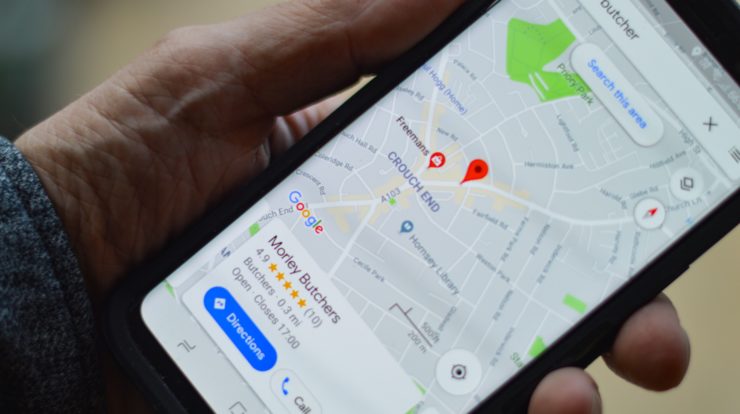
The way mobile phone users vigorously engage with locations is changing corporate marketing and advertising. A recent study showed that 55% of smartphone owners use their devices for “a location-specific task.” Smartphones are pocket personal computers so it is no surprise that the biggest brands of the online industry era seek to remain up to date and dominate the mobile web too.
Companies of the likes of Google, Yahoo!, and Bing are all active in local search. They offer geographically aware applications that increasingly favor local results – all thanks to the GPS technology and network carrier triangulation systems that know where you are.
The heavy use of GPS technologies, the accelerating speed of 3G & 4G networks, the continuous increase of the popularity of smartphones, mCommerce and the rising use of location-based social network services (such as Foursquare, Twitter, and Facebook) means that the one-way conversation of location sharing by users has now changed to a two-way conversation between smartphone users and businesses.
What is SoLoMo?
SoLoMo (Social Location Mobile) refers to users interacting with brands, products, and businesses through their social networks and gamified applications using their mobile phones to share their location, pictures, and favorite places.
In most cases, SoLoMo is defined as any location-based engagement a consumer takes to interact with a geographic area via their mobile device, whether by sharing their experience, mentioning and liking on social media, or engaging with other users.
People update their social networks by snapping photos, updating their feeds on Facebook and sharing instantly with hundreds of friends at a time using various applications all from their smartphone instantly and on the go.
SoLoMo is based on two things:
- Social Location Sharing
Consumers have the ability to choose who they want to share their locations and experiences with. While a large number of people choose to only share their locations and customer experiences with their closed network of friends, there are also many people who choose to share their experience with the world. This has proven to be a powerful and very influential marketing technique when it comes to products, retailers and purchase decision. People want to share with everyone about their experiences with a brand instantly, and they do so though their social networks.
2. Social Location Marketing
Social Location Marketing is where companies and businesses market on mobile devices to users who are prepared to share their location. The fact that businesses are able to interact and engage with consumers in this sphere presents businesses and marketers with a number of opportunities. Targeted messages, combined with real-time location data tracking has opened up a new era in marketing to consumers.
SoLoMo in Action
A large segment from local business to large companies have taken advantage of the possibilities and capabilities of SoLoMo, focusing on their mobile strategy I terms of location-based marketing. These businesses market and advertise to mobile users for free. Upon creating their location-based property on Foursquare or any other social network, they can start advertising and promoting special offers. With mobile devices being such a huge part of people’s daily lives, the ability to use mobile check-ins offer marketers a number of opportunities and advantages.
Foursquare has popularized the concept of checking in, and according to comScore, one-in-five smartphone owners have checked in at some time. As an addition, a new option in Foursquare called Radar will, under user’s permission, automatically let the user know when friends check-in at a nearby store or the user is close to a flagged business that intended to go. In the near future, Foursquare will be able to jump into another hype and fast expanding service in mobile advertising, namely “Geofencing” where businesses can send push alerts and messages to consumers once they’re within a certain radius of their store.
In addition, there are also a number of companies delivering and enabling mobile marketing activities incorporating the social sharing factor. Companies such as Placecast, Xtify and ThinkNear give companied and retailers control over the offers delivered to customers based on geographic location, time of day and demand.
There are also a number of mobile applications that demonstrate the user experience through SoLoMo technologies. Some of them are:
- GetGlue: Allows users to check in to TV shows, movies and music; recommends other items users might enjoy.
- Trover: Registered users share interesting discoveries within locations; photos are geo-tagged; community features encourage sharing.
- myShopanion: Enables conversations around products; offers action buttons: Like/Dislike; Own; Want.
- ShopSavvy: Enables consumers to research products at point of sale by scanning bar code, confirming availability and price; delivers “hyper-relevant” UPC/GPS-targeted promotions.
- ThinkNear: Allows businesses to offer deals to nearby customers at slow times, taking into account traffic, weather and nearby events; deals expire in 1-2 hours to boost demand immediately.
- Stampt: Digital loyalty card, registered by scanning; users can elect to update via Twitter and Facebook; inputs user data to CRM systems so merchants can use to send personalized offers.
Limitations & Opportunities
The number one concern of social media users who aren’t using location-based marketing is privacy and safety. In a study where over 1000 US consumers were surveyed, and are on social networks, and are familiar with location-based marketing activities, 48% cited privacy concerns as their number one reason for not doing so.
SoLoMo marketing campaigns are widely used by companies operating in various industries, generating increasing participation of users who wish to interact with brands. On the other hand, social and mobile have proven to be more effective when implemented by specific industries.
Industries who better utilize the capabilities of SoLoMo and have a greater future potential are:
- Fashion: Since Marc Jacobs’ campaign in New York Fashion Week in 2010 many businesses in the fashion industry – from luxury footwear brand Jimmy Choo and Diesel to small boutiques have been successfully blending social media and location-based marketing
- Retail: In the retail industry, location-based social networks can provide businesses with a unique way to reward their regular customers. Loyalty-based programs, such as the one implemented by Starbucks, give loyal customers a way to benefit from frequent visits
- Hospitality: Tourism companies are creating tailored lists for people visiting popular vacation destinations, giving a lot of free exposure to hotels, venues and other getaway destinations. Getting your venue’s name on a list for the best brunch spots or for the best golf course is a free way of connecting with people who are in your area or planning on travelling to your location
- QSRs: Lists are also a great way to market restaurants. You will see suggestions of related lists at different places – when you check-in at the Clinton Street Bakery, you might see a list of “Pancakes across America”, for example. Restaurants can also use Foursquare badges in a number of ways, such as offering a “Foursquare happy hour” where customers who check-in receive a free appetizer, free drink or a specific discount. The marketing exposure that restaurants will benefit from check-ins will far surpass the money spent on giveaways.


